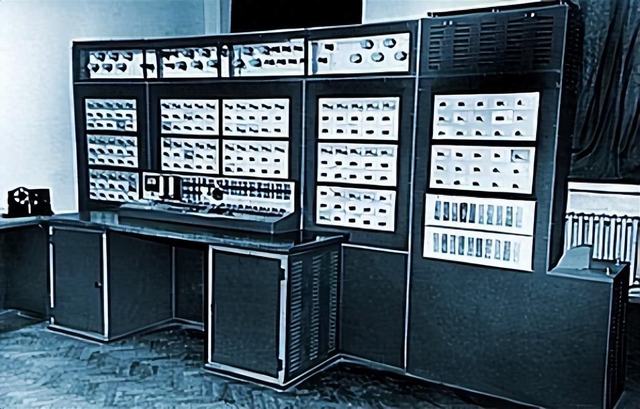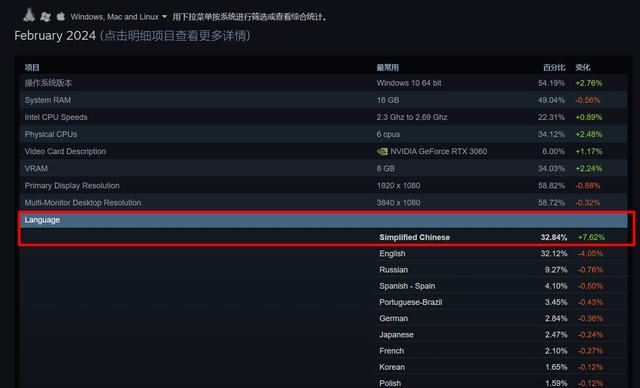Why did binary take over the Soviet Union's ternary computer? The core lies in the narrowing of our
Most people who use computers only consider them as a tool. Only technicians and enthusiasts have the possibility to investigate the development process behind computers.
Since the invention of computers, and later to their widespread adoption, binary digit systems have been used. In the early days of the invention of computers, there were also decimal and ternary systems.

Among them, the ternary product was developed by the Soviet Union. However, this type of product, not only in the world but also within the Soviet Union, has not caused any waves.
To this day, some viewpoints on the history of computer research believe that the ternary system is superior to the binary system and more in line with human usage logic. However, later on, due to technical difficulties in promotion, it was ultimately the binary products of Americans that "picked peaches".
So, are ternary products really losing to technology? Or are other factors affecting its development?
(First generation computers developed by Americans)
In the early days of computer technology, both professional and popular names were still called computers. In 1947, a student named Bashir Rameyev eavesdropped on BBC broadcasts and learned that Americans had developed computers at the end of 1945.
The first generation computer called ENIAC weighed a total of 27 tons, and the distribution of electronic tubes alone reached an astonishing 17468.
The key is that during use, electronic tubes are almost burned out every day, making it a luxury to have the computer work continuously for 20 hours. So in most cases, this behemoth is in a state of shutdown.
Although Rameyev was not familiar with the detailed situation of American computers, he came up with new ideas upon hearing the broadcast. During the period when Rameyev conceived his own product, the Soviet Union was actually making computers for electronic tube products.
A computer called MESM, also known as a giant product, is said to be more durable and electronic tubes less prone to damage than American products.
During this period, Americans had already developed transistors in 1947. Around 1950, the Soviet Union also produced their own transistors.
Later, the United States developed new types of computers based on transistors, and the Soviet Union also conceived and pursued them during this period. Among them, the concept conceived by Rameyev et al. is a product that replaces electronic tubes with transistors.
Overall, in the 1950s, the Soviet Union and the United States were basically on equal footing in the field of computer science.
However, the following changes changed the direction of the evolution of computer processes and also made Soviet technology lag behind from then on.
Computers based on electronic tubes have not been used by Americans for long. Since the 1960s, computers introduced by the United States have mainly been based on transistor architecture. The digital systems of computers are also binary. During this period, the Soviet people had different ideas about the internal architecture of computers.
The transformation occurred in 1956 when a group of young students from Moscow University, led by Sobolev, an academician of the Academy of Sciences, began to conceive of the underlying architecture of computers. A brand new ternary digit system computer, with its basic concept born in this year.
After more than two years of research and production, it is named Сетунь The computer was introduced in 1958. Subsequently, it took at least two years for the development team to conduct a series of tests on the product.
Existing public information shows that due to its underlying architecture being ternary, compared to binary computers, it is simpler and more stable to learn and use. There is evidence that it does not require specialized learning of assembly language to operate. In addition, computer maintenance is also very convenient.
After the testing was completed, 50 computers of this model were produced and all products were used by universities, research institutions, and enterprises.
Post feedback indicates that the power consumption of this product is lower compared to other computers, and the operating speed of the circuit is also very fast. Therefore, after a period of trial, all parties hope that the product can be mass-produced. And the next problem precisely arises in this link.
The development of this computer was only a spontaneous act of Sobolev and a few young students from beginning to end. Under the planned economic system of the Soviet Union at that time, it was not up to the R&D personnel and enterprises to decide whether to mass produce this type of computer.
There is evidence to suggest that the Soviet Union officially halted this product at that time. The company that produced this model of computer also closed down a factory in Czechoslovakia as a result.
Although mass production has not yet begun, R&D personnel have not stopped exploring the path. Throughout the 1960s, computer research around ternary digit systems continued to advance.
In 1970, new products emerged Сетунь 70 has been pushed out again. The new product has established a byte "try" that is different from binary "byte".
In terms of performance and operation, the new product has been further optimized. However, the fate of new products is still to be locked in the warehouse and eat dust. Therefore, after this product, the development of ternary computers no longer exists.
From a technical perspective, there is now a belief that a ternary digital system is more stable and convenient than a binary structure. Some even argue that its concept of "fuzzy mathematics" is closer to the way the human brain thinks.
Due to the architecture of binary computers, there are only yes and no, only true and false, no unknown fields, and no uncertainty in the running logic, which greatly limits their performance. However, the way humans think, there is a great deal of ambiguity and uncertainty.
So some even believe that if ternary computers continued to develop without interruption, the concept of artificial intelligence might be redefined now.
However, all these claims are actually delayed. Because computers based on the ternary digit system, not to mention their continuation, were not widely used even in the Soviet Union at that time. Therefore, the vast majority of people actually do not understand how it is.
As for going back to the past to verify the situation, some information is not complete, and some information may even be completely wrong. For example, around the advantages of ternary computers, the description of a large amount of information is now homogeneous, indicating that the initial source of information was the same.
And the biggest problem lies in this, not to mention finding other differentiated sources of information, even this unique source of information is difficult to find. Therefore, whether a ternary computer is superior to binary is a speculation.
Only one thing can be basically certain: the shutdown of the ternary computer was probably done by the Soviet government.
In fact, not only were ternary computers shut down, but there were also many differences between the Soviet Union and the United States in the field of electronic technology, either due to inconsistent technology trees or widening the gap over time.
For example, during the development of ternary computing, Americans created integrated circuits in the 1960s. However, in the field of integrated circuits, the Soviet Union did not follow up on research and development back then,
Although relevant research and development had been carried out, the Soviet Union's idea was actually to miniaturize electronic tubes. And in this field, they have indeed succeeded. During this period, the Soviets did indeed break through the size limit of electronic tubes and developed the technology of small electronic tubes.
However, precisely because of this, when integrated circuits later became the trend, Soviet people looked at themselves as different from other technological trees and could only reluctantly choose to abandon them.
As the saying goes, one step at a time is wrong. The gap opened up on computers later limited its miniaturization and home use.
In the early 1980s, Apple's first generation of personal computers had already been introduced. Some Soviet researchers also wanted to follow suit and proposed the concept of the Micro 80 computer.
However, Nikolai Gorshkov, the then head of the Ministry of Electronic Industry, said this to young R&D personnel: stop tinkering, retirement benefits, villas, and cars will all be available, but only miniaturized computers will not. Have you ever seen a computer? Do you know that it covers an area of 100 square meters and usually requires 25 people to maintain it?
If he really said these words, it means that the Soviet Union at this time, not only in terms of technology, but also in terms of thinking, has seriously lagged behind, and the distance from the ideas of advanced countries is getting farther and farther.
So, what is the reason for the Soviet Union's technology tree becoming increasingly crooked?
By the 1980s, even China was shocked by the extent to which the Soviet Union had expanded its presence in the field of computer technology. At that time, data showed that the installation of small computers in the Soviet Union was only one tenth of that in the United States, and the use of microcomputers was only one hundredth of that in the United States.
According to the observations made by Chinese people after arriving in the Soviet Union at that time, old-fashioned hand cranked computers were still used everywhere. Moreover, only various departments of the country use computers, and other fields such as enterprises, restaurants, banks, and shops have almost no computers. So much so that some people lament that there are many microcomputers in big cities in China, but not in the Soviet Union.
The reasons for this situation have been summarized by the outside world in the past three points.
The first factor is that the Soviet Union's invention, creation, and application are seriously disconnected. Things like transistor computers, ternary digit systems, and even mobile phones, which were invented by the Soviet Union, were ultimately not popularized.
Because scientific research and government led promotion are two systems, the latter controls all resources and can directly determine whether a certain product can be launched and promoted. Data shows that in the 1980s, the Soviet Academy of Sciences released 1400 scientific research achievements, but only 430 were ultimately adopted.
The second factor was that the Soviet Union had focused its development on traditional industrial products for many years, without paying attention to all emerging technologies. Especially in the field of computer science, from changes in type to changes in volume, the Soviet Union eventually gave up completely and did not engage in any innovation.
The last factor was the rigidity of the Soviet Union's technology management system, which buried a large number of talents. The technology field of the Soviet Union was also under a centralized management model, which allowed the Soviet Union to concentrate on research and development of military and aerospace technologies.
But technology is not just limited to these two fields. When rigid patterns persist, other technologies that have not entered the official view are not valued. In this way, some things are completely ignored.
In addition to the three factors mentioned above, there is also speculation that the Soviet Union's insistence on electronic tube products in the computer field was due to concerns that electromagnetic pulses would affect integrated circuits such as transistors in future nuclear wars.
Although this speculation is unfounded, there is a situation where the Soviet Union did indeed classify the research and development of computer technology as the highest secret in history, and did not continuously disclose and apply new technologies to the national economy like the United States did. It can indeed be vaguely seen from this that the Soviet Union has always used a war mode thinking in the development of computer technology.
Another scenario is that during the Cold War, the West led by the United States imposed a comprehensive technological blockade on the Soviet Union. This situation directly led to Soviet researchers being unable to accurately predict the direction of computer technology development. In the end, due to misjudgment caused by information asymmetry, the Soviet Union was miniaturizing electronic tubes, while the Americans were already playing with new products.
Looking back at the lack of popularity of ternary computers, one will find that even if the performance of this type of computer is really good, it will not truly be promoted and applied due to various factors.
So, the Soviet Union not only made a mistake in selecting the technology tree, but also the result of multiple situations working together and ultimately leading to it.
From this point, it can also be seen that whether or not to support the development of the technology field is not the most critical issue. The important thing is to open up development and not intervene in it.
Reference materials:
"The Experience and Lessons of Promoting Economic Development through Computer Science and Technology in the Soviet Union" International Journal of Technical and Economic Research, April 2, 1994

